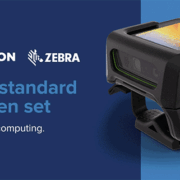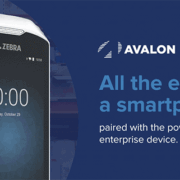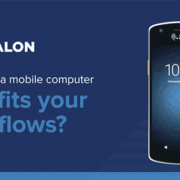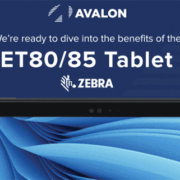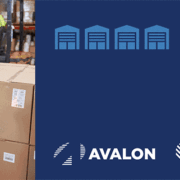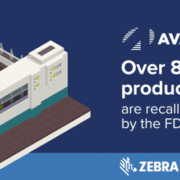Technology developers are constantly raising the bar in intelligent automation, which is why it’s no surprise that Zebra Technologies has once again revolutionized mobile computing with the world’s smallest enterprise computer – the WS50 Android Wearable Computer.
Developed with worker connectivity in mind, the new WS50 gathers several tools such as push-to-talk capabilities, intelligent scanning, and swappable batteries all within a 2-inch touchscreen frame that can be adjusted for either wrist, back of hand, or two-finger mounting. Combined with Zebra’s Mobility DNA apps and Android’s versatile interface, the device ultimately empowers…
- Lightweight streamlined inventory updates since data can be scanned and stored in real-time through one device.
- Flexible usage across the supply chain from the production line to the loading dock to the retail storefront.
- Around-the-clock task management via a low-power-consumption touchscreen.
- Dependable data security delivered through Mobility Extensions and LifeGuard for Android.
- Instant detailed documentation realized through one 13MP embedded camera.
With so many similar and new benefits integrated in one device, the question still stands: why would operations need a smaller computer?
Why pick a smaller device in place of a standard mobile computer?
Traditional handheld and touch computers still play a vital role in connecting workers and digitizing inventory management. However, as workspaces adapt, future-forward technologies must also evolve to maintain these functionalities in new challenging spaces. For example, the increase in micro-fulfillment centers has fueled a need for accurate real-time connectivity between customers and delivery teams simultaneously. Labor shortages have created a demand for simplistic technologies that are easily adoptable by younger generations seeking employment. With all these considerations in mind, the WS50 may be a more beneficial option for companies seeking to…
- Simplify battery management for lower TCO since the wearable device consolidates several tasks onto one terminal.
- Unify teams without deploying and tracking two-way radios through embedded push-to-talk and dependable WiFi connectivity.
- Lower onboarding and training costs with Android’s future-proof and familiar operating system.
New challenges empower innovation. As customer demands and shortages continue to reshape supply chains, solution providers can keep counting on new and improved tools to enhance workflow efficiency. Explore the latest technology optimizations and see how they can fit in your operations when you contact Avalon for more information.

